Maternal Child Nursing Care > EXAM > Solutions Provided TEST BANK For Foundations of Maternal Newborn and Women’s Health Nursing 7th (All)
Solutions Provided TEST BANK For Foundations of Maternal Newborn and Women’s Health Nursing 7th Edition, by Murray, McKinney, Holub & Jones/ All chapters Included
Document Content and Description Below
Chapter 01: Maternity and Women’s Health Care Today Foundations of Maternal-Newborn & Women’s Health Nursing, 7th Edition MULTIPLE CHOICE 1. A nurse educator is teaching a group of nursing stud... ents about the history of family- centered maternity care. Which statement should the nurse include in the teaching session? a. The Sheppard-Towner Act of 1921 promoted family-centered care. b. Changes in pharmacologic management of labor prompted family-centered care. c. Demands by physicians for family involvement in childbirth increased the practice of family- centered care. d. Parental requests that infants be allowed to remain with them rather than in a nursery initiated the practice of family-centered care. ANS: D 2. Expectant parents ask a prenatal nurse educator, “Which setting for childbirth limits the amount of parent–infant interaction?” Which answer should the nurse provide for these parents in order to assist them in choosing an appropriate birth setting? a. Birth center b. Home birth c. Traditional hospital birth d. Labor, birth, and recovery room ANS: C In the traditional hospital setting, the mother may see the infant for only short feeding periods, and the infant is cared for in a separate nursery. Birth centers are set up to allow an increase in parent–infant contact. Home births allow the greatest amount of parent–infant contact. The labor, birth, recovery, and postpartum room setting allows for increased parent–infant contact. DIF: Cognitive Level: Understanding OBJ: Nursing Process Step: Planning MSC: Patient Needs: Health Promotion and Maintenance 3. Which statement best describes the advantage of a labor, birth, recovery, and postpartum (LDRP) room? a. The family is in a familiar environment. b. They are less expensive than traditional hospital rooms. c. The infant is removed to the nursery to allow the mother to rest. d. The woman’s support system is encouraged to stay until discharge. ANS: D Sleeping equipment is provided in a private room. A hospital setting is never a familiar environment to new parents. An LDRP room is not less expensive than a traditional hospital room. The baby remains with the mother at all times and is not removed to the nursery for routine care or testing. The father or other designated members of the mother’s support system are encouraged to stay at all times. DIF: Cognitive Level: Understanding OBJ: Nursing Process Step: Assessment MSC: Patient Needs: Health Promotion and Maintenance 4. Which nursing intervention is an independent function of the professional nurse? a. Administering oral analgesics b. Requesting diagnostic studies c. Teaching the patient perineal care d. Providing wound care to a surgical incision ANS: C Nurses are now responsible for various independent functions, including teaching, counseling, and intervening in nonmedical problems. Interventions initiated by the physician and carried out by the nurse are called dependent functions. Administrating oral analgesics is a dependent function; it is initiated by a physician and carried out by a nurse. Requesting diagnostic studies is a dependent function. Providing wound care is a dependent function; however, the physician prescribes the type of wound care through direct orders or protocol. DIF: Cognitive Level: Understanding OBJ: Nursing Process Step: Assessment MSC: Patient Needs: Safe and Effective Care Environment 5. Which response by the nurse is the most therapeutic when the patient states, “I’m so afraid to have a cesarean birth”? a. “Everything will be OK.” b. “Don’t worry about it. It will be over soon.” c. “What concerns you most about a cesarean birth?” d. “The physician will be in later and you can talk to him.” ANS: C The response, “What concerns you most about a cesarean birth” focuses on what the patient is saying and asks for clarification, which is the most therapeutic response. The response, “Everything will be ok” is belittling the patient’s feelings. The response, “Don’t worry about it. It will be over soon” will indicate that the patient’s feelings are not important. The response, “The physician will be in later and you can talk to him” does not allow the patient to verbalize her feelings when she wishes to do that. DIF: Cognitive Level: Application OBJ: Nursing Process Step: Implementation MSC: Patient Needs: Psychosocial Integrity 6. In which step of the nursing process does the nurse determine the appropriate interventions for the identified nursing diagnosis? a. Planning b. Evaluation c. Assessment d. Intervention ANS: A The third step in the nursing process involves planning care for problems that were identified during assessment. The evaluation phase is determining whether the goals have been met. During the assessment phase, data are collected. The intervention phase is when the plan of care is carried out. DIF: Cognitive Level: Understanding OBJ: Nursing Process Step: Planning MSC: Patient Needs: Safe and Effective Care Environment 7. Which goal is most appropriate for the collaborative problem of wound infection? a. The patient will not exhibit further signs of infection. b. Maintain the patient’s fluid intake at 1000 mL/8 hour. c. The patient will have a temperature of 98.6F within 2 days. d. Monitor the patient to detect therapeutic response to antibiotic therapy. ANS: D In a collaborative problem, the goal should be nurse-oriented and reflect the nursing interventions of monitoring or observing. Monitoring for complications such as further signs of infection is an independent nursing role. Intake and output is an independent nursing role. Monitoring a patient’s temperature is an independent nursing role. DIF: Cognitive Level: Application OBJ: Nursing Process Step: Planning MSC: Patient Needs: Safe and Effective Care Environment 8. Which nursing intervention is written correctly? a. Force fluids as necessary. b. Observe interaction with the infant. c. Encourage turning, coughing, and deep breathing. d. Assist to ambulate for 10 minutes at 8 AM, 2 PM, and 6 PM. ANS: D Interventions might not be carried out if they are not detailed and specific. “Force fluids” is not specific; it does not state how much or how often. Encouraging the patient to turn, cough, and breathe deeply is not detailed or specific. Observing interaction with the infant does not state how often this procedure should be done. Assisting the patient to ambulate for 10 minutes within a certain timeframe is specific. DIF: Cognitive Level: Application OBJ: Nursing Process Step: Planning MSC: Patient N [Show More]
Last updated: 1 year ago
Preview 1 out of 417 pages
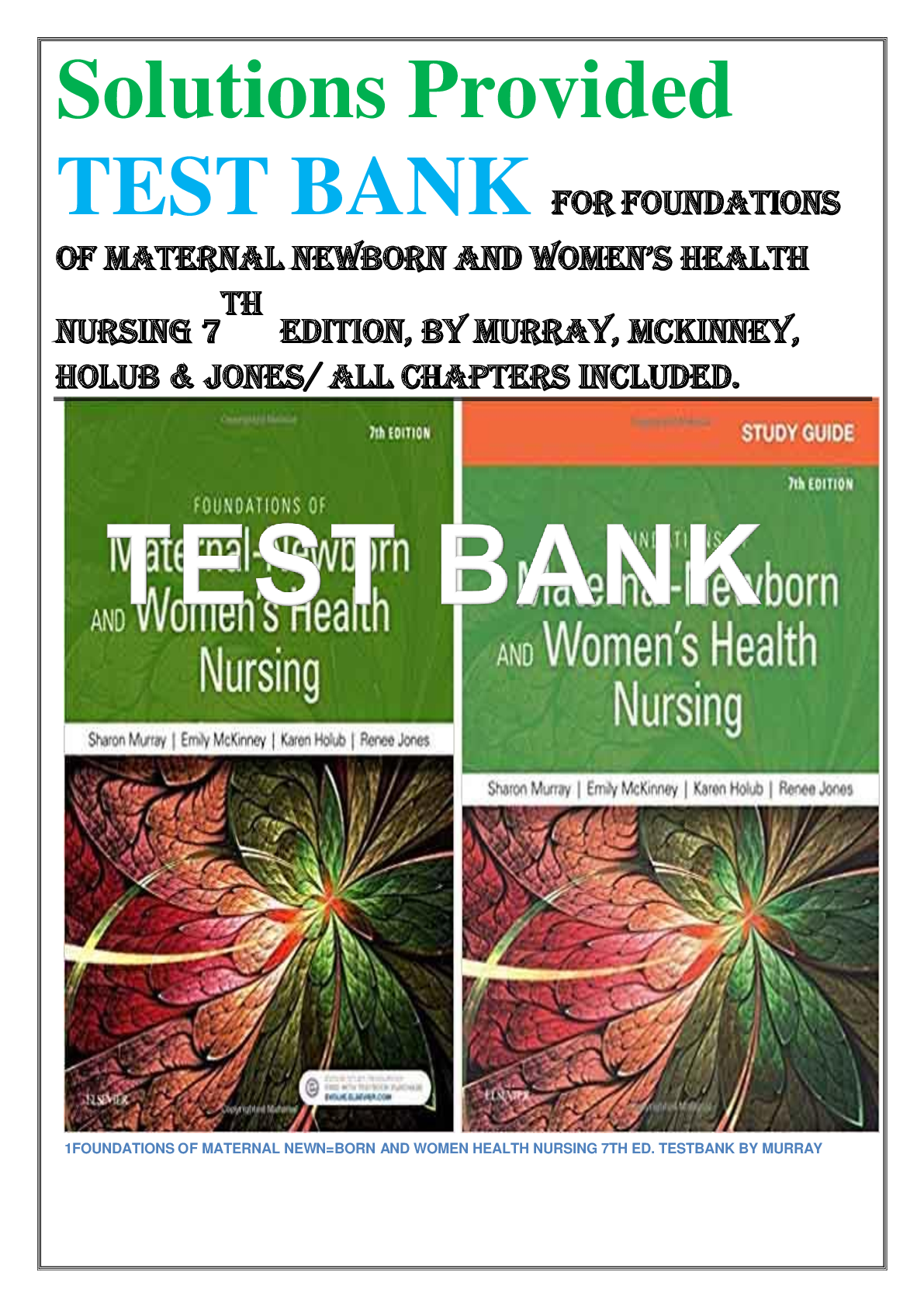
Buy this document to get the full access instantly
Instant Download Access after purchase
Buy NowInstant download
We Accept:

Reviews( 0 )
$14.00
Can't find what you want? Try our AI powered Search
Document information
Connected school, study & course
About the document
Uploaded On
Aug 24, 2023
Number of pages
417
Written in
Additional information
This document has been written for:
Uploaded
Aug 24, 2023
Downloads
0
Views
64

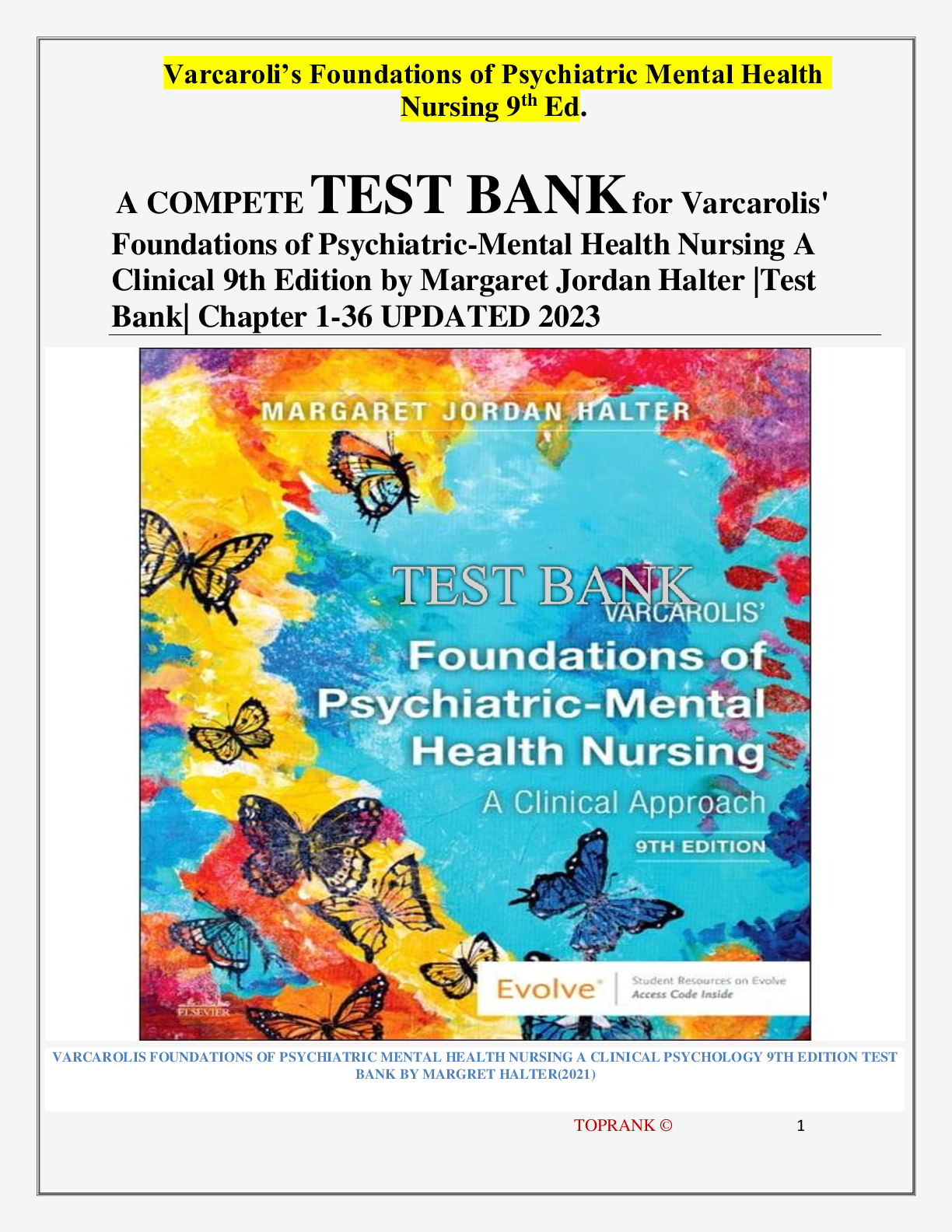
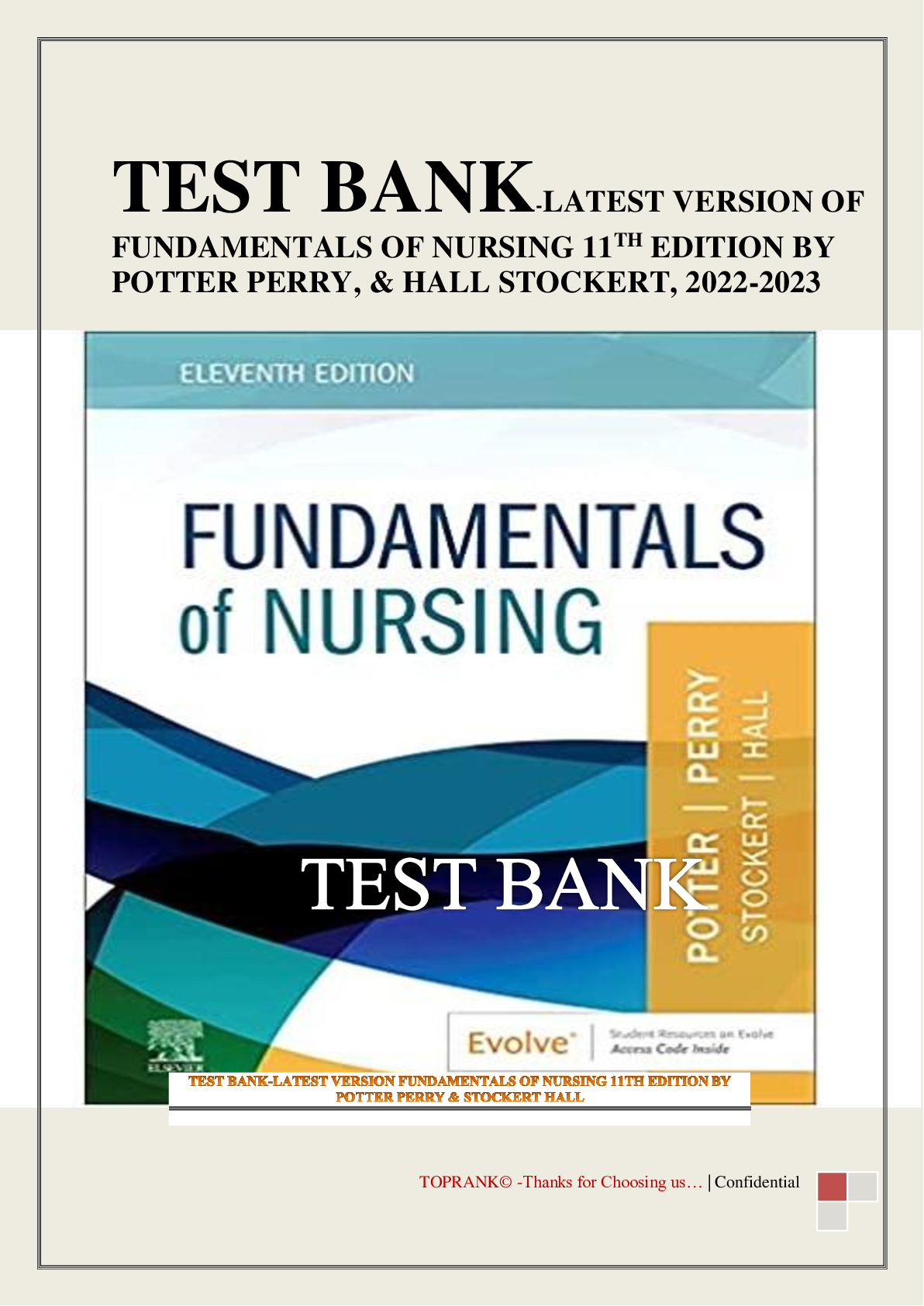
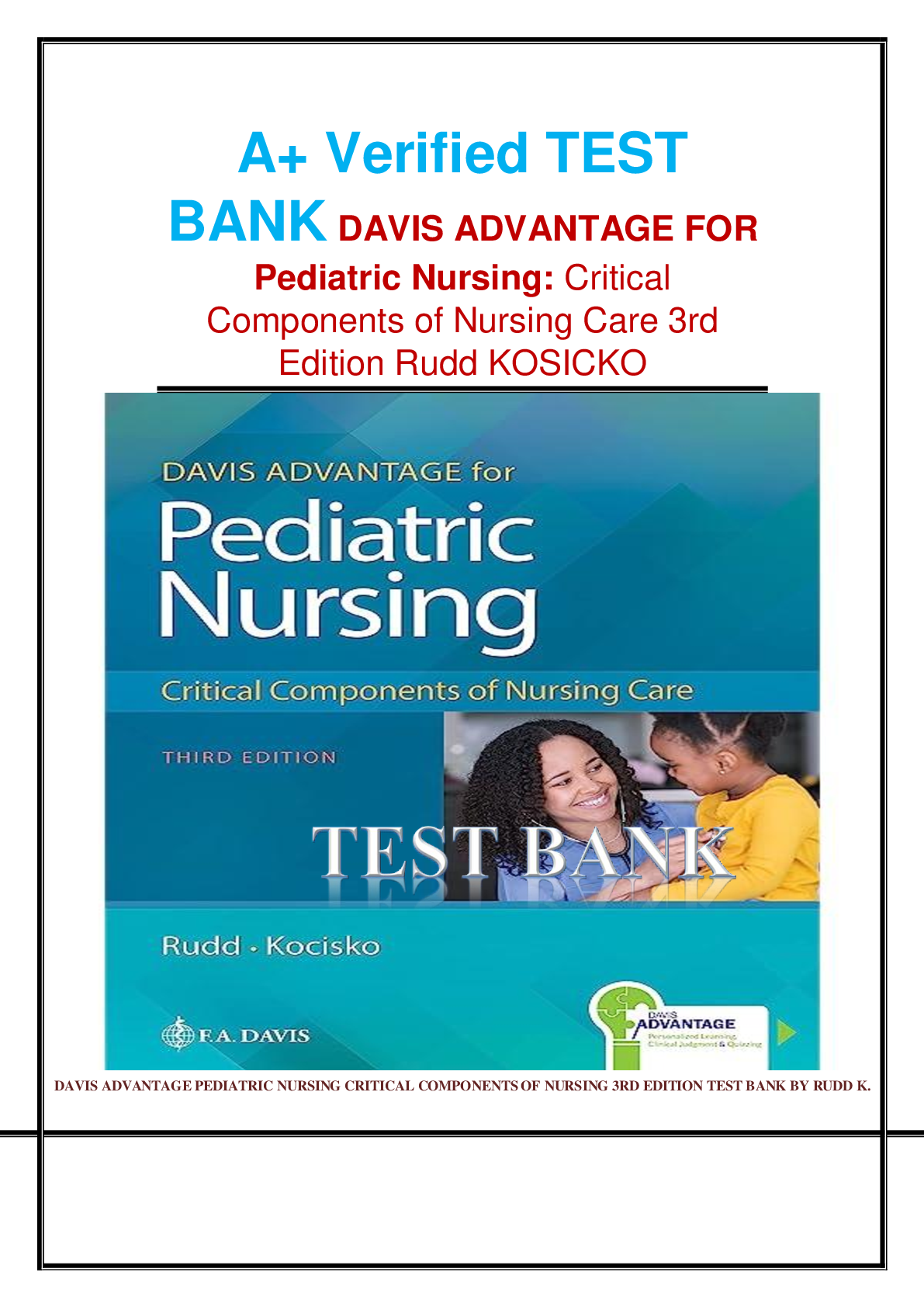

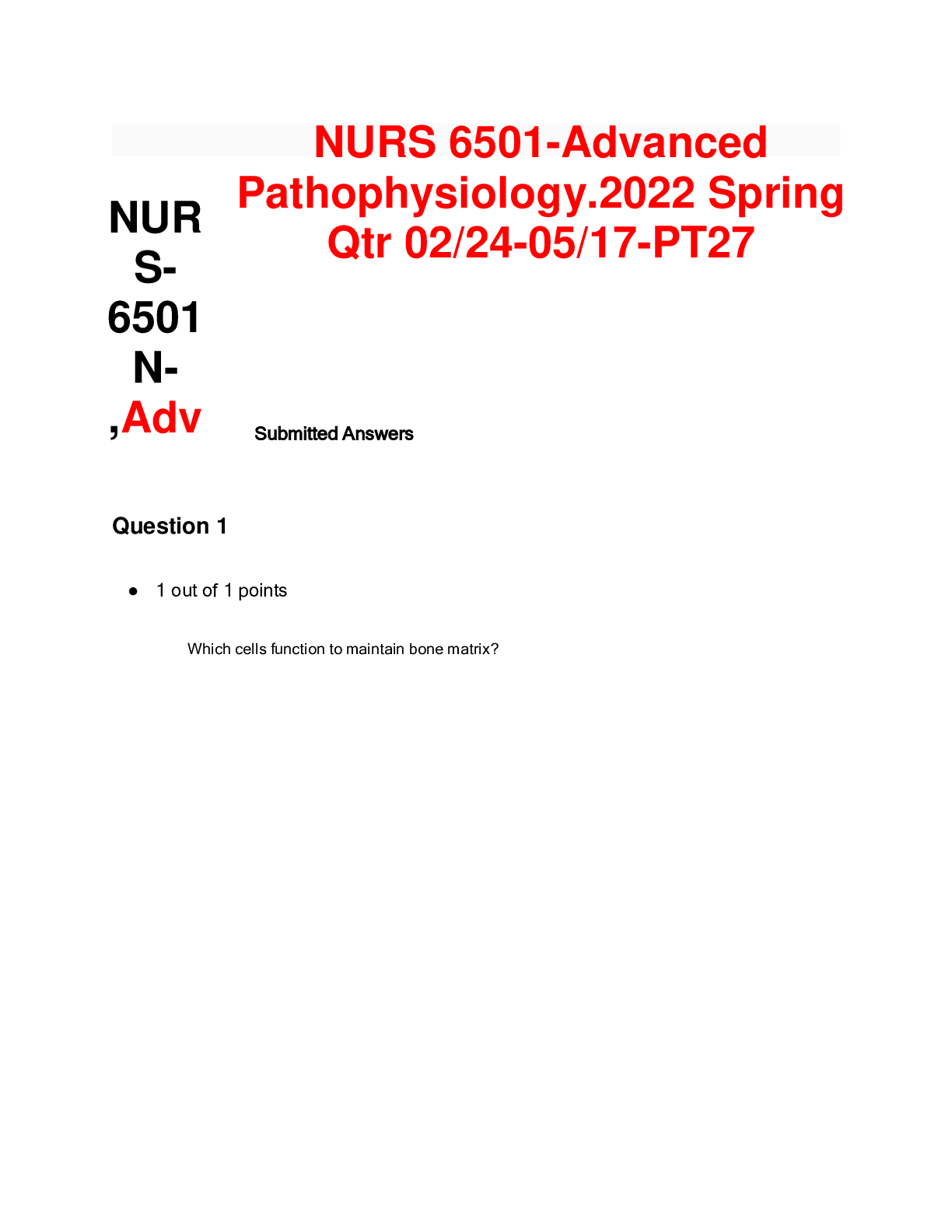

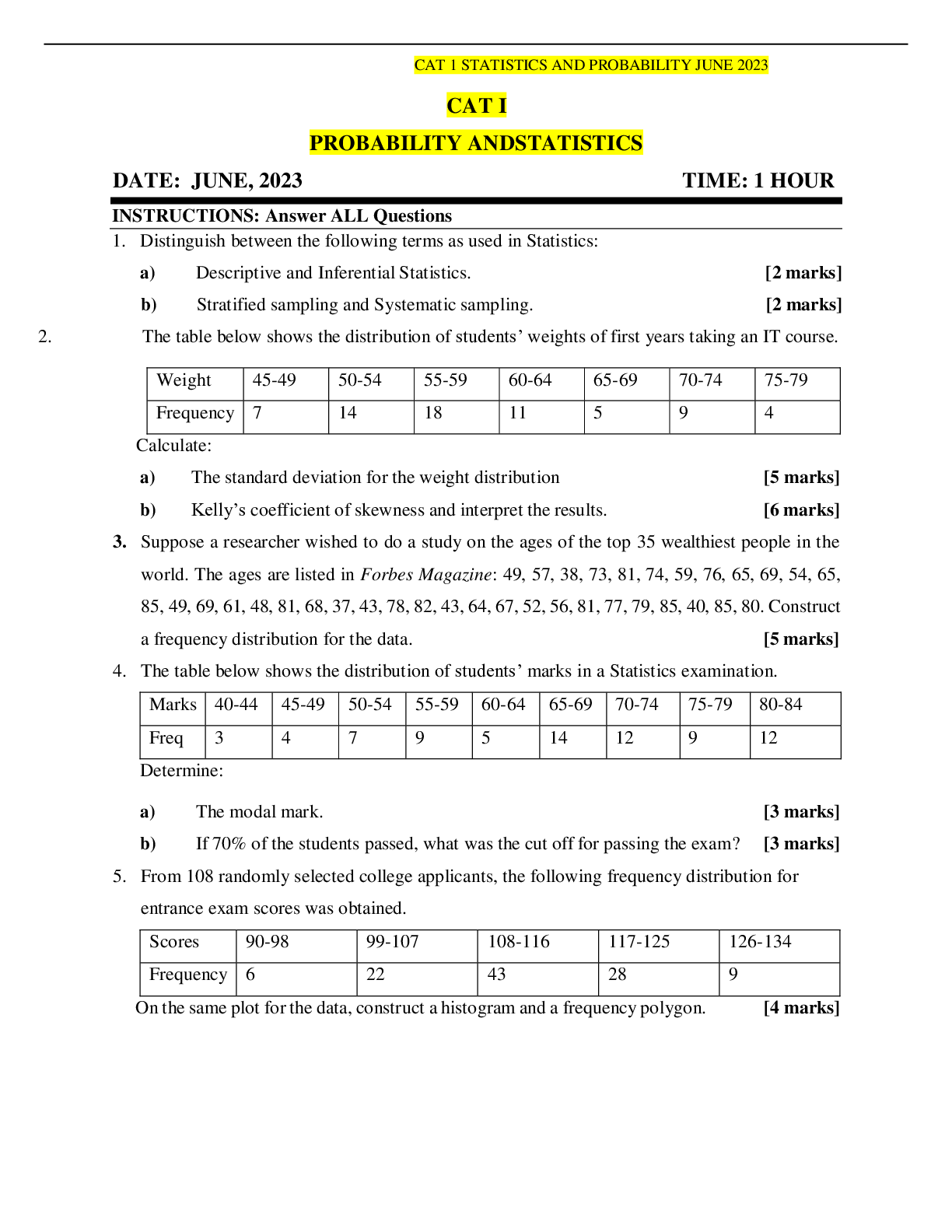
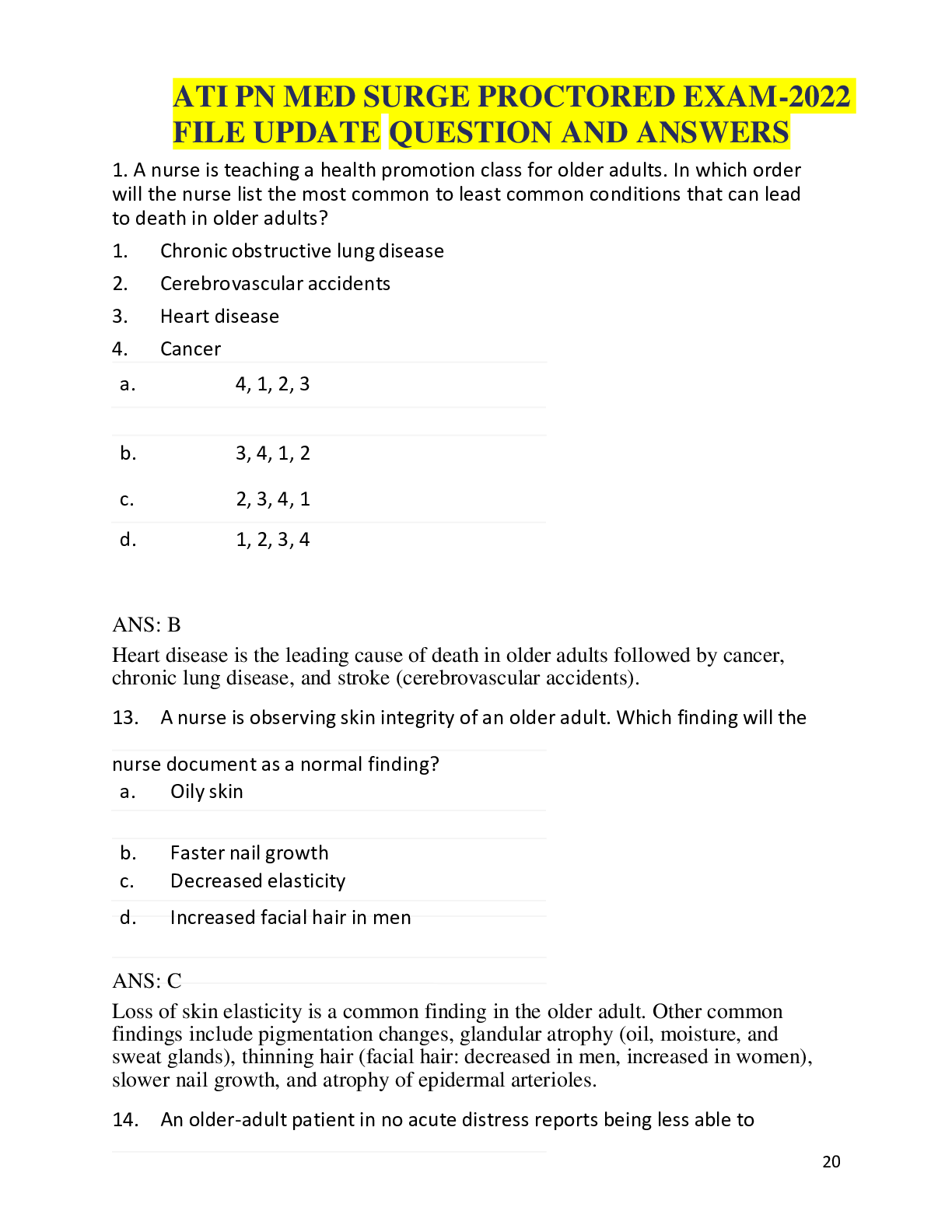
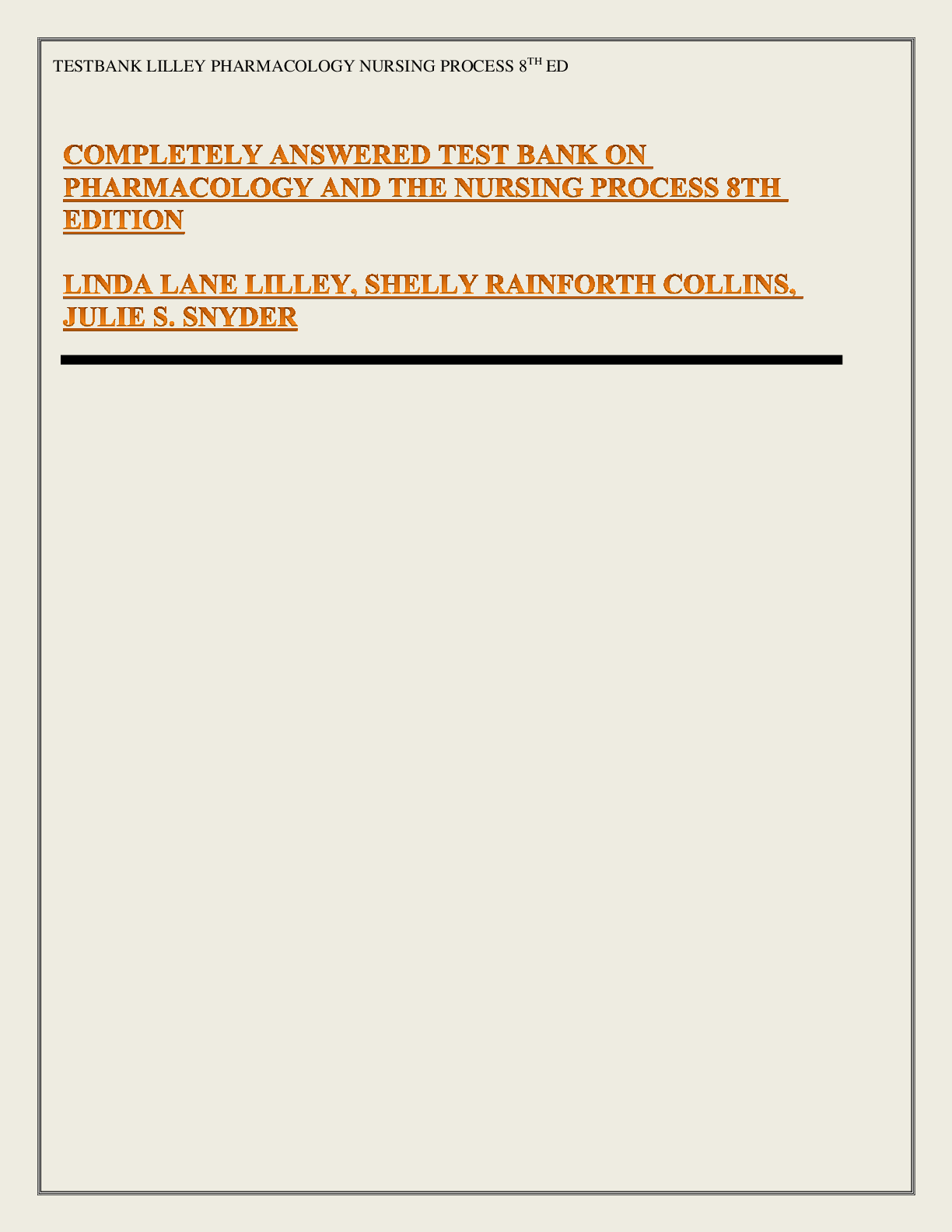
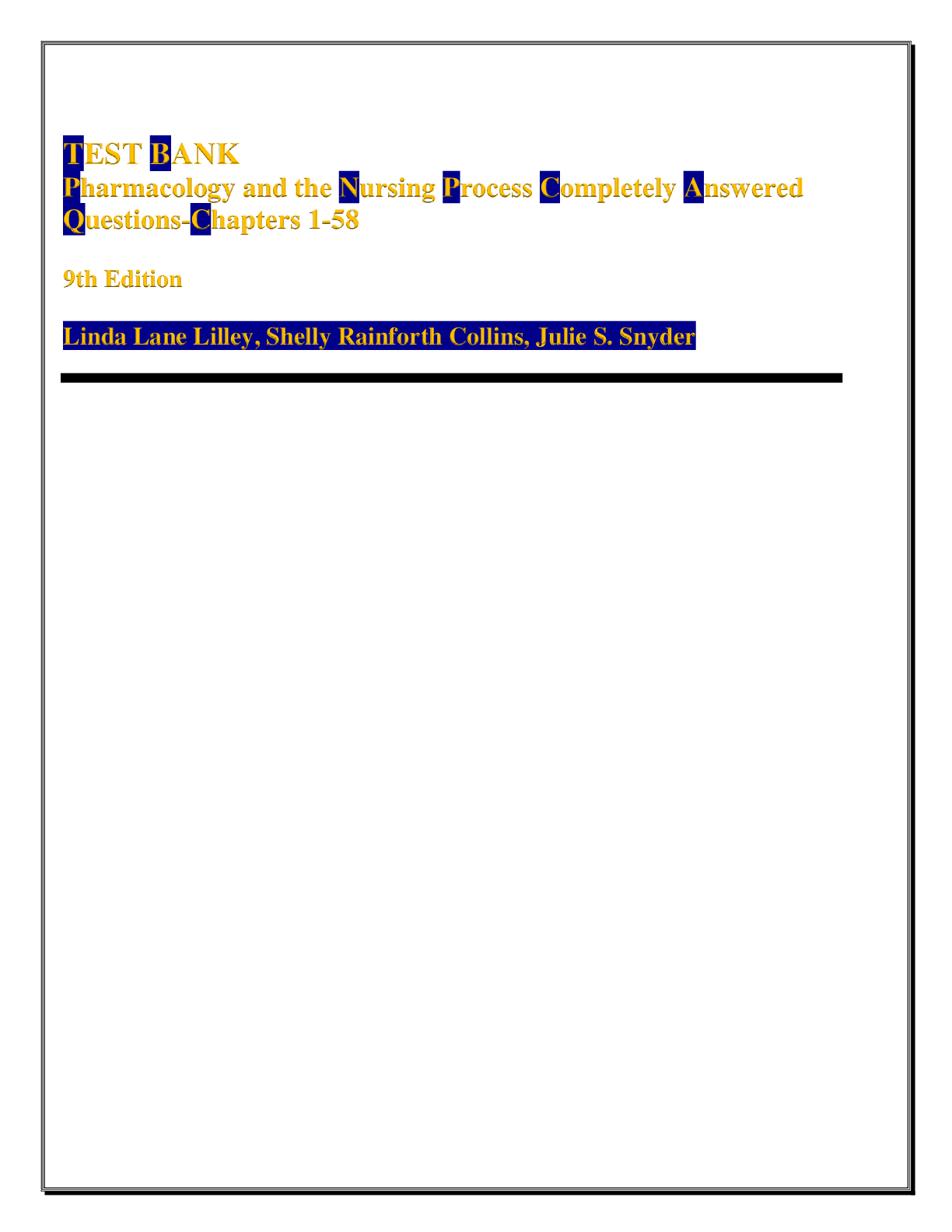
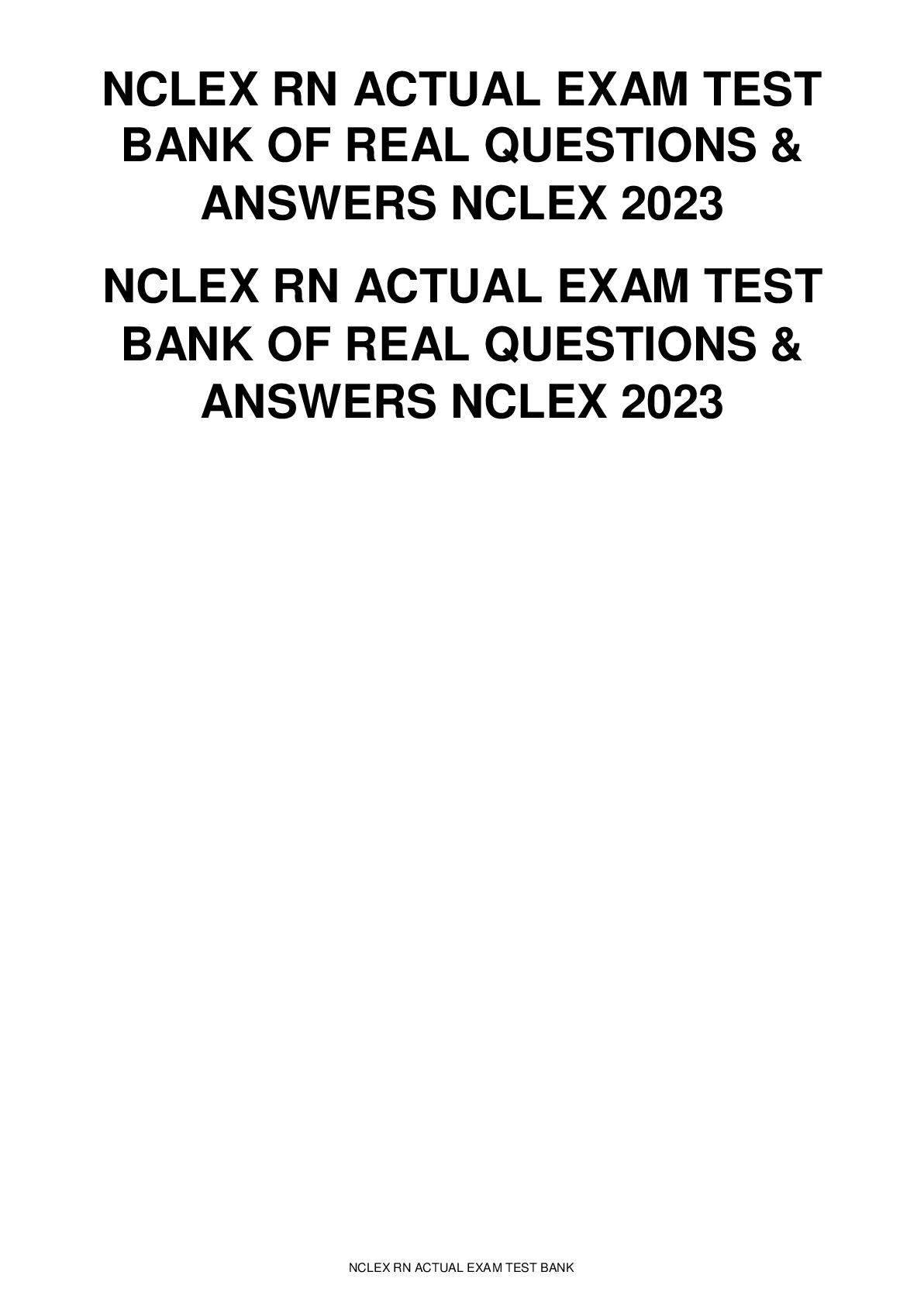
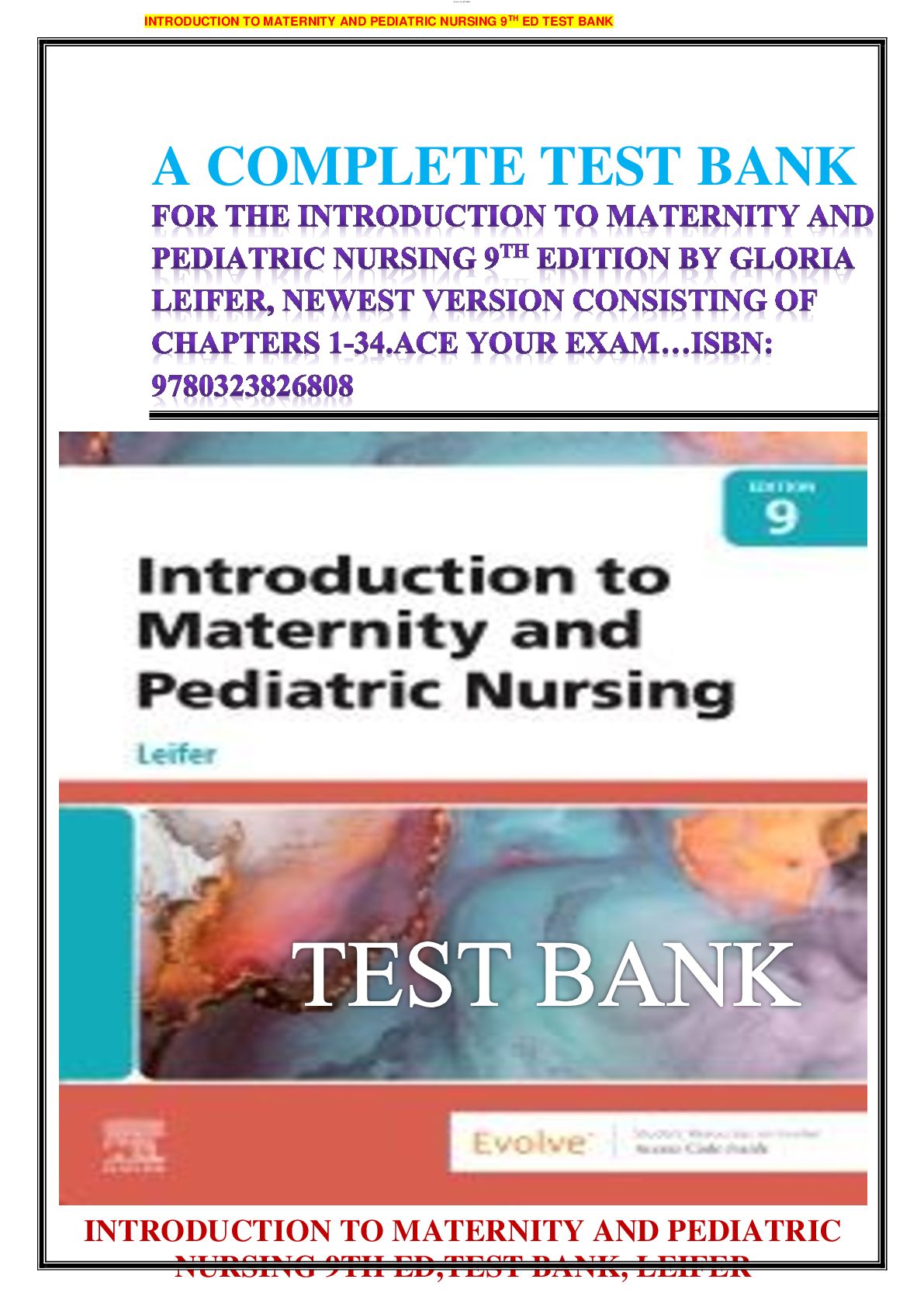
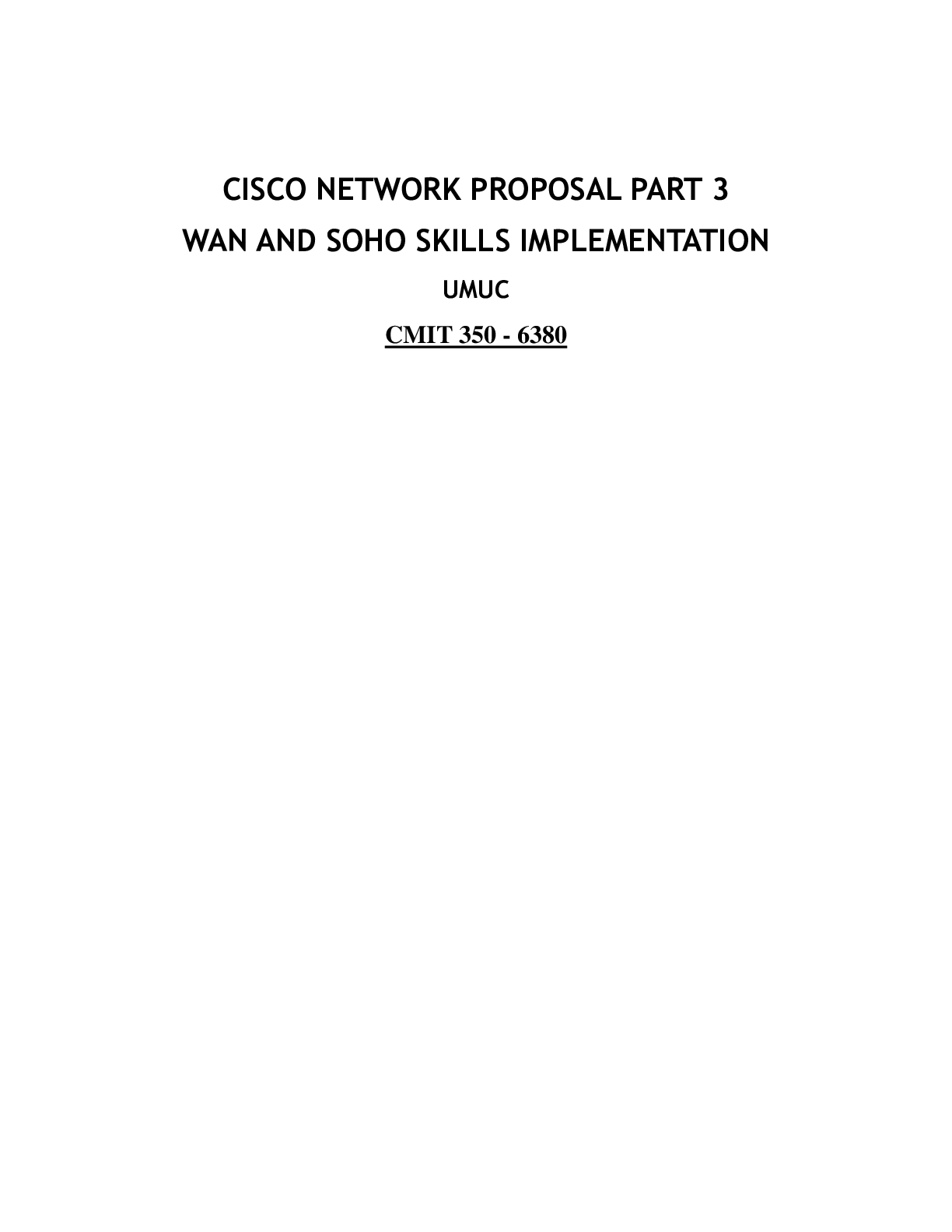
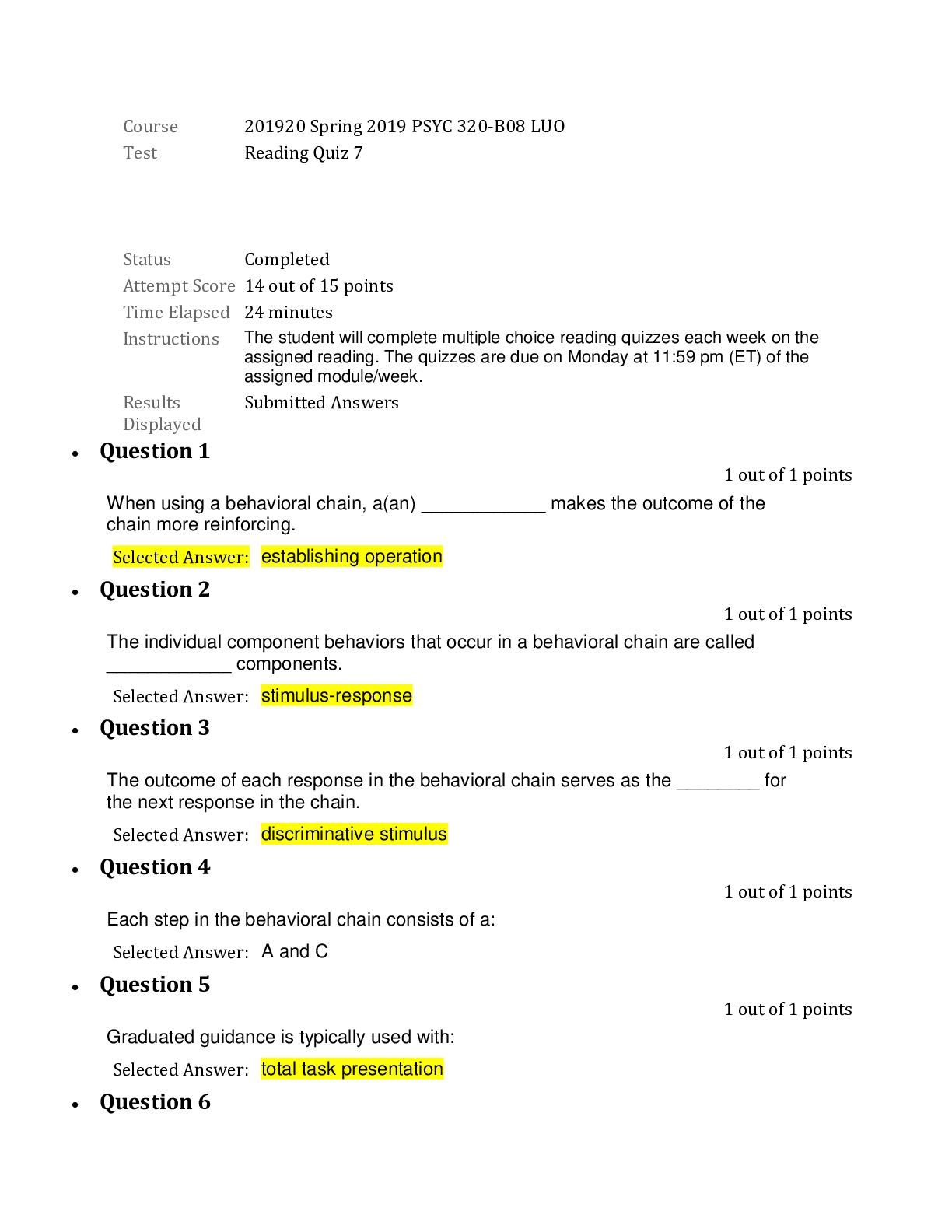
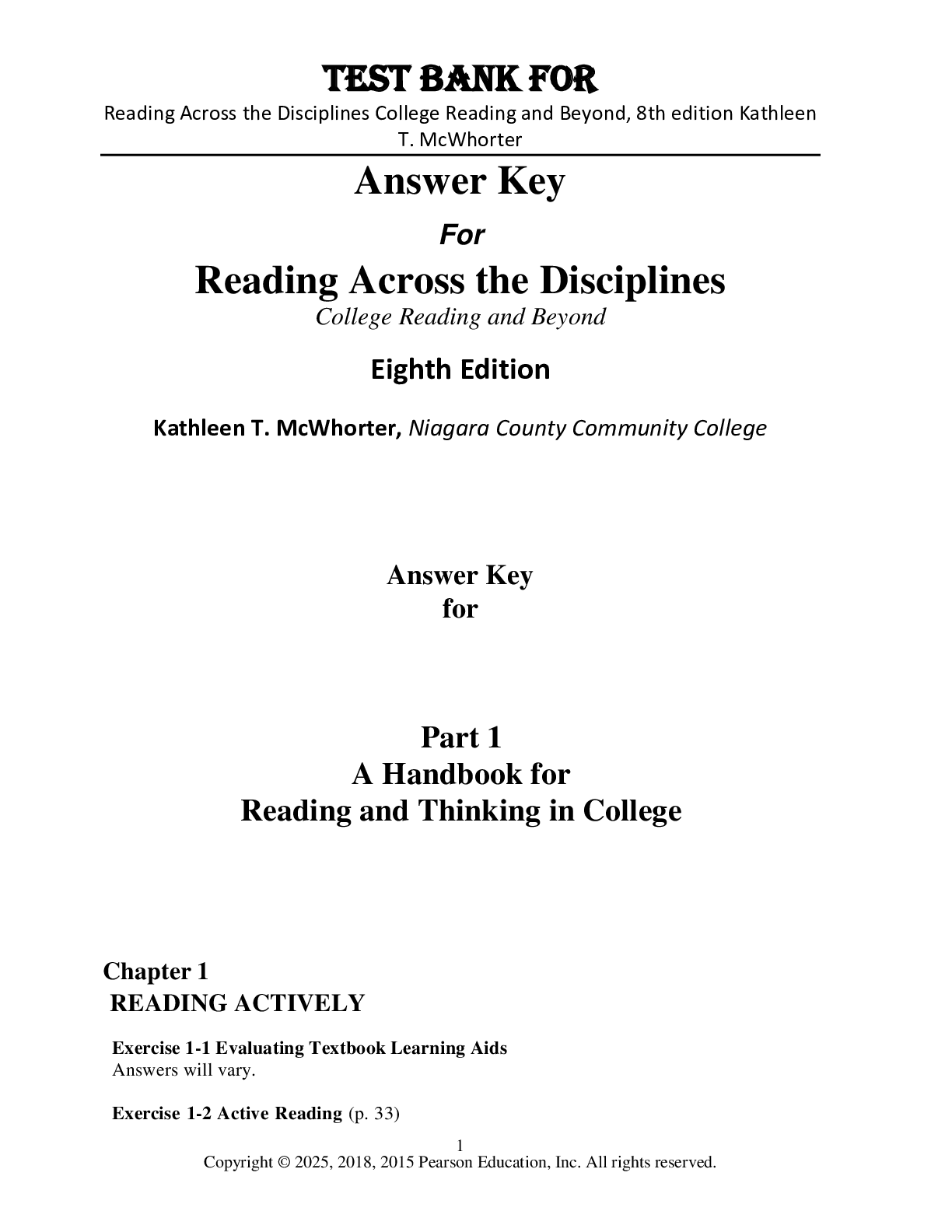
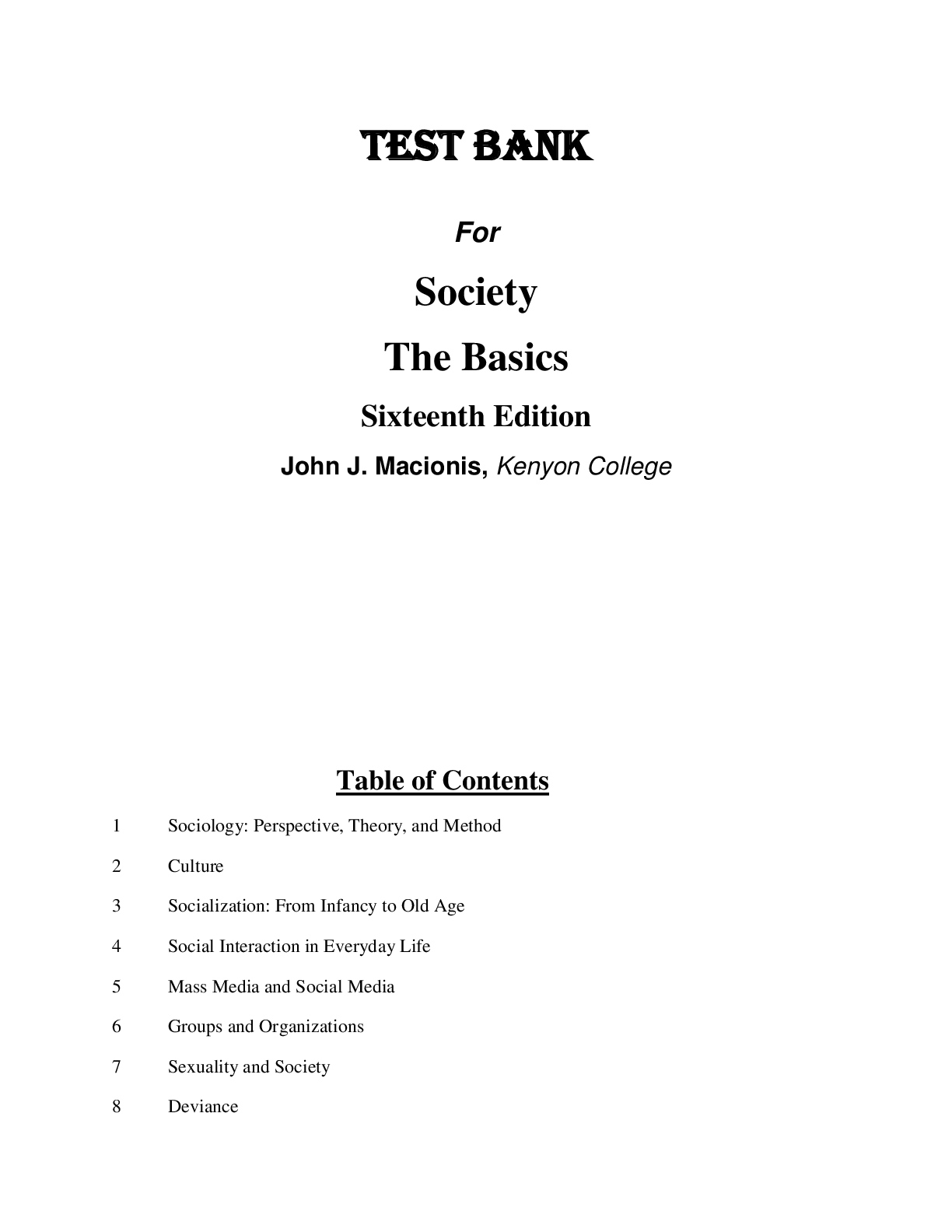
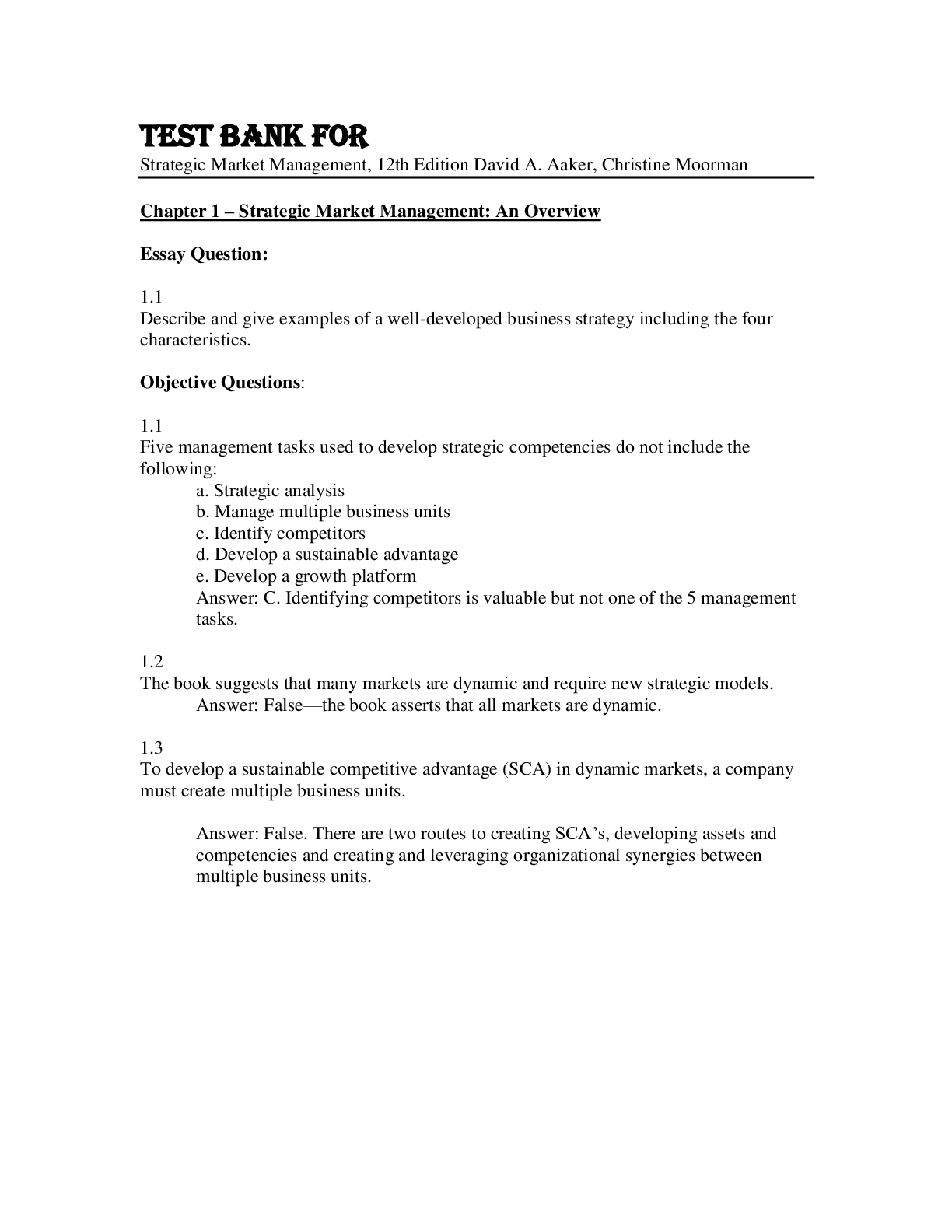


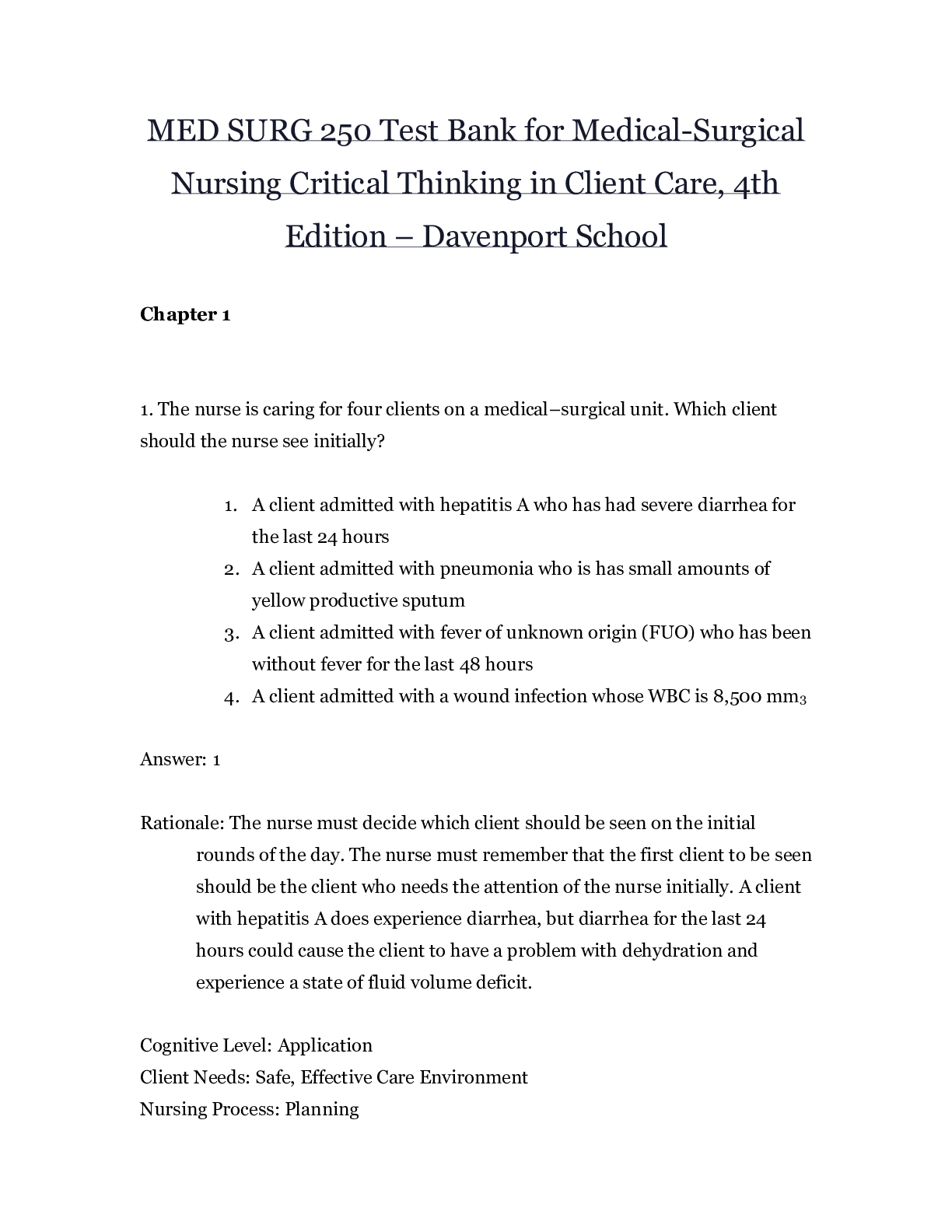
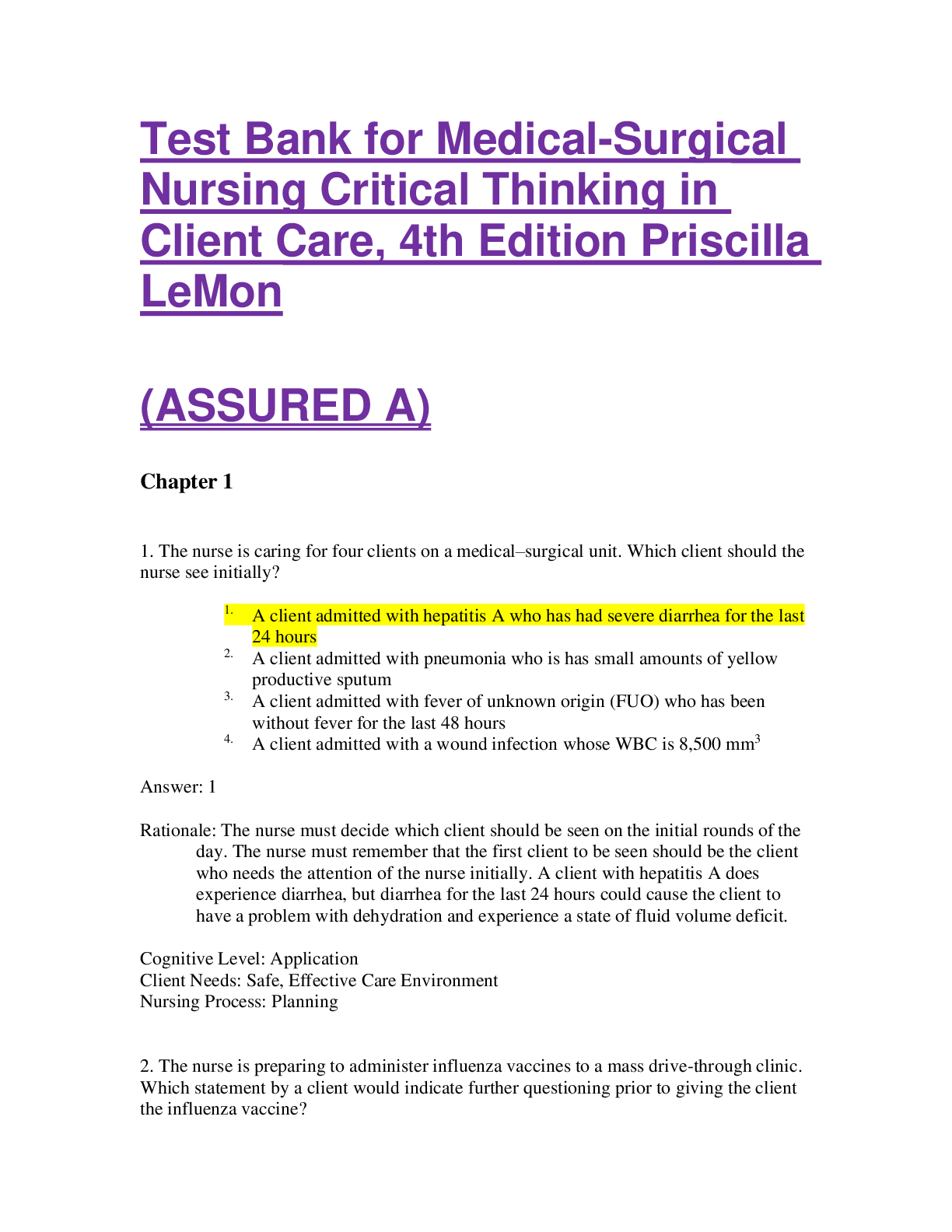
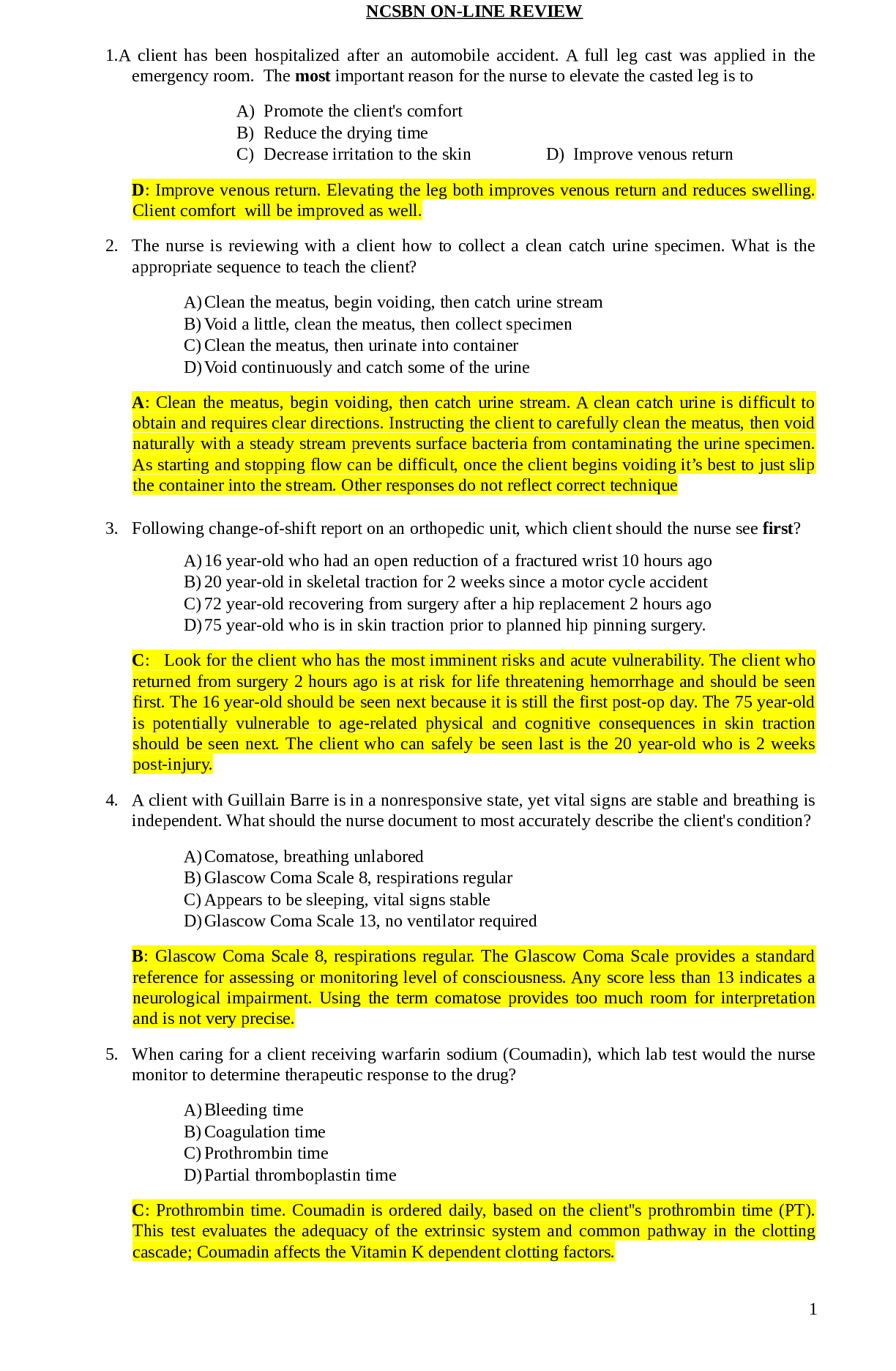
.png)


